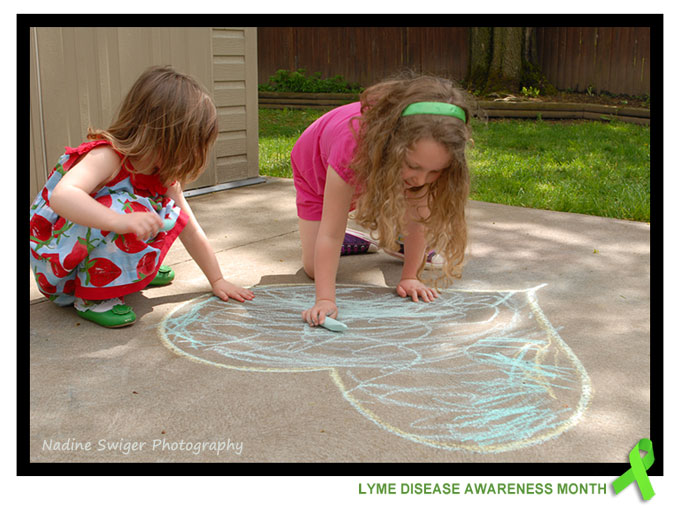Protect Your Kids….. Lyme Disease Awareness Photos
Day 5 : Lyme Disease Awareness Photos
MYTH : The only time you will need antibiotics is when you develop a bulls-eye rash.
This statement is FALSE!
_________________________________________________________________________________________
Actually a little less than 70% of people who have Lyme Disease ever saw the bulls-eye rash, 50% have no history of tick attachment, making Lyme disease trick to diagnose. Did you know that 25% of Lyme patients are children? Be sure to learn the fact to help protect your children.
Here are a list of what symptoms to look for in your child if you suspect Lyme Disease:
(According to lymedisease.org)
- severe fatigue unrelieved by rest
- insomnia
- headaches
- nausea, abdominal pain
- impaired concentration
- poor short-term memory
- inability to sustain attention
- difficulty thinking and expressing thoughts
- difficulty reading and writing
- being overwhelmed by schoolwork
- difficulty making decisions
- confusion
- uncharacteristic behavior
- outbursts and mood swings
- fevers/chills
- joint pain
- dizziness
- noise and light sensitivity
_________________________________________________________________________________________
For more information about Children and Lyme Disease visit: www.lymedisease.org/resources/children.html
_________________________________________________________________________________________





Great article! Very informative!
[…] […]
also, less than half of lyme patients ever see a beyslule rash. if you do see a rash, that in itself is diagnostically indicative of lyme infection; but you can be infected without ever seeing a rash of any kind.
I have Lyme disease & am an actvie member of a Lyme organization. Over the past several years, I have spoken to many people with Lyme disease. For those that did develop the bulls-eye rash, they claim the rash resulted after a mosquito, gnat, or yellow fly bite. TICKS ARE NOT THE ONLY TRANSMITTER OF LYME DISEASE ! Borellia burgdorferi aka Lyme bacteria, is a spirochete form of bacteria. It’s in the same family as the bacteria that causes Syphilis. Lyme disease CAN also be sexually transmitted.